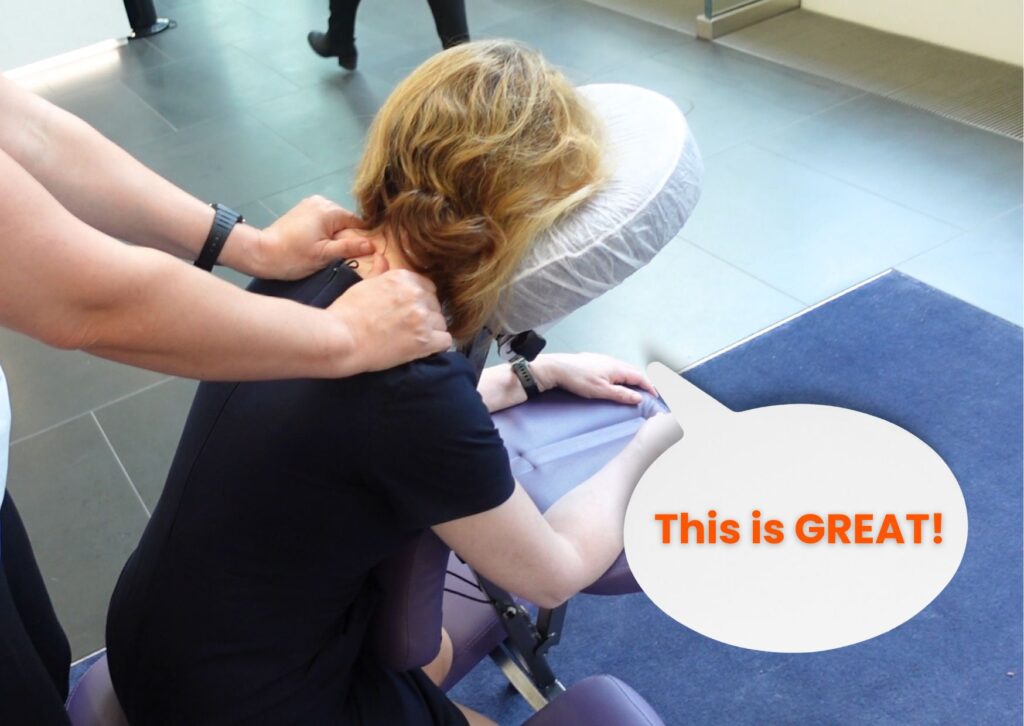Tackling Seasonal Affective Disorder (SAD): Bringing Light to the Dark
Seasonal affective disorder is like a cold wind that sweeps through, often making everything seem gloomy when the days get shorter in autumn/fall and winter.
This unwelcome guest tends to stay around, dimming the usual joy and energy until the brighter days of spring return.
If you’ve felt this chill, know that many share this experience.
The good news is, there’s a way to shake off the cold grip of seasonal affective disorder and find warmth and light again.
In the upcoming sections, we’ll explore what causes this seasonal mood change, how common it is, and most importantly, share some practical tips to overcome it, regaining a sense of joy and energy, even when the skies are grey.
Contents
What is Seasonal Affective Disorder?
What Causes Seasonal Affective Disorder?
Statistics on Seasonal Affective Disorder
10 Practical Tips to Overcome Seasonal Affective Disorder
How can Companies Support Employees with Seasonal Affective Disorder
What is Seasonal Affective Disorder?
Seasonal affective disorder (SAD) is a type of depression that comes and goes with the seasons.
It’s a real and tough challenge many face.
Typically, SAD hits as the days shorten in the late fall and winter, when sunlight becomes a rare gem.
Then, it usually lifts as the flowers bloom in the spring and summer, bringing longer, sunnier days.
The symptoms of SAD are similar to depression but they show up seasonally, almost like clockwork.
They include feeling low, lacking energy, having trouble sleeping or oversleeping, experiencing changes in appetite or weight, and having difficulty concentrating.
It can feel like a heavy cloud that won’t lift, making the colder months something to dread.
But it’s not just a case of winter blues.
SAD can seriously affect how you feel, think, and handle daily activities.
It’s a recognised disorder that can have a significant impact on quality of life.
Understanding SAD is the first step to finding solutions.
Just as every winter has its spring, there are ways to navigate through the gloom of SAD and find light, warmth, and wellbeing on the other side.
What Causes Seasonal Affective Disorder?
The exact cause of seasonal affective disorder (SAD) isn’t fully understood, but it’s believed to be related to the changes in sunlight exposure that occur with the changing seasons.
Here’s a closer look at some factors that may play a part:
Reduced Sunlight
When the days shorten during fall and winter, there’s less sunlight to go around.
This scarcity of natural light can mess with your body’s internal clock, leading to feelings of depression.

Melatonin Levels
The change in season can also disrupt the balance of the body’s level of melatonin, a hormone which plays a role in sleep patterns and mood.
When it’s dark, your body produces more melatonin, which can make you feel sleepy and lethargic.
Serotonin Levels
Serotonin is a neurotransmitter that affects mood.
Lack of sunlight can lower serotonin levels, possibly leading to depressive symptoms.

Vitamin D Deficiency
There’s a link between a lack of vitamin D (often dubbed the “sunshine vitamin”) and symptoms of depression, including seasonal affective disorder.
Vitamin D is produced in the skin in response to sunlight and plays a part in serotonin activity.
Genetic Factors
Like other forms of depression, SAD may have a genetic component.
If someone in your family has experienced SAD or other forms of depression, you may be more likely to experience SAD.
Biological Clock (Circadian Rhythm)
Your body’s biological clock, or circadian rhythm, can get out of sync with the change in season.
This can lead to feelings of depression, fatigue, and weight gain.
Understanding these factors can be like holding a torch in the dark, shedding light on the pathways that lead to SAD.
While the grey skies of winter may cast long shadows, understanding the causes of seasonal affective disorder is a step towards finding the light again.
Each strand of understanding adds a ray of hope, and with it, the promise of brighter, lighter days ahead.

Statistics on Seasonal Affective Disorder
Seasonal affective disorder (SAD) touches the lives of many, with the sway of seasons dictating the mood in a rhythm that can feel as predictable yet uncontrolled as the turning of leaves.
Here are some statistics that shed light on the impact of SAD:
- According to the American Psychiatric Association about 5% of adults in the U.S. experience SAD, and it typically lasts about 40% of the year. The journey through SAD each year isn’t a quick stroll but more of a marathon.
- Research from the National Library of Medicine found that SAD is more common among women than men. It also tends to show up more often in young adults. It’s a visitor that doesn’t discriminate by age but tends to knock on the doors of the young adults more frequently2.
- The National Health Service (NHS) in the UK suggest that approximately 2million people suffer from SAD each year.
These statistics paint a picture of how SAD weaves into the fabric of many lives, often in silence, its arrival and departure dictated by the whims of the seasons.
While the numbers provide a glimpse into the widespread nature of SAD, they also beckon a call to action.
The more we understand the scope of SAD, the better equipped we are to find solutions, offering a torch of hope in the chilly embrace of the darker months.

10 Practical Tips to Overcome Seasonal Affective Disorder
Navigating through the fog of seasonal affective disorder can be challenging, but with the right set of tools, it’s possible to find clarity and warmth.
Here are some practical steps that can help pave the way to brighter days:
1. Light Therapy
Light therapy is a popular and effective treatment for seasonal affective disorder.
It involves sitting near a light therapy box that emits bright light mimicking natural sunlight.
The light from the therapy box stimulates the brain to reduce the production of melatonin (a hormone that makes you feel sleepy) and increase the production of serotonin (a hormone associated with feelings of happiness and wellbeing).
It’s usually done within the first hour of waking up for about 20 to 30 minutes, although the exact duration and timing can vary based on individual needs and the specifics of the light box.
It’s essential to choose a light therapy box that emits a safe level of light, with an intensity of about 10,000 lux, and to follow the guidelines provided by a healthcare professional.

2. Maintain a Regular Sleep Schedule
Keeping a consistent sleep schedule can help regulate your body’s natural sleep-wake cycle, which is often disrupted in people with seasonal affective disorder.
Aim for 7-9 hours of sleep each night, and try to go to bed and wake up at the same time every day, even on weekends.
Create a bedtime routine that signals to your body that it’s time to wind down.
This could include reading a book, taking a warm bath, or practicing relaxation exercises like meditation or gentle yoga.
Avoid stimulants like caffeine and nicotine close to bedtime, and keep your bedroom dark, cool, and comfortable to promote better sleep quality.

3. Exercise Regularly
Engaging in regular physical activity is a powerful way to combat the symptoms of seasonal affective disorder.
Exercise helps in releasing endorphins, which are natural mood lifters.
It also helps in improving sleep and reducing anxiety.
Whether it’s a brisk walk, a run, yoga, or a workout session at the gym, finding a form of exercise that you enjoy can make a significant difference.
It’s beneficial to aim for 30 minutes of exercise most days, but any amount of physical activity is better than none and is also great for your physical health.
Even a short daily walk in natural daylight can be refreshing and beneficial.

4. Healthy Diet
Eating a balanced and nutritious diet can support your mood and energy levels.
It’s wise to incorporate a variety of foods rich in vitamins, minerals, and antioxidants into your daily meals.
Foods rich in omega-3 fatty acids like fish, walnuts, and flaxseeds, and foods high in vitamin D can be particularly beneficial.
It might be tempting to reach for sugary snacks and carbohydrates, but these can lead to a crash in energy and mood later on.
Maintaining a regular eating schedule and staying hydrated can also play a crucial role in managing the symptoms of seasonal affective disorder.

5. Mindfulness and Relaxation Techniques
Practicing mindfulness through techniques like meditation and deep breathing can be a lifeboat in the stormy seas of seasonal affective disorder.
These practices help in grounding your thoughts and emotions, making it easier to navigate through the challenges that come with seasonal mood changes.
Setting aside some time each day for relaxation and mindfulness can create a space of calm amidst the turbulence, helping to restore a sense of balance and wellbeing.

6. Stay Connected
The cold months can sometimes push us into hibernation mode, detaching from social activities.
However, staying connected with supportive friends and family is essential.
Social interactions can provide a warmth that the chilly weather strips away.
Engaging in social activities, even if virtual, can lift your spirits and provide a sense of belonging and understanding that is crucial during tough times.
Remember, you’re not alone in this, and reaching out for support or simply sharing your experiences with others can be incredibly comforting.

7. Establish a Routine
Establishing a routine can be a lifeline when dealing with seasonal affective disorder.
A structured day can provide a sense of normalcy and predictability amidst the unpredictable emotions that may come with seasonal changes.
Wake up, eat, exercise, and sleep at the same times every day to help regulate your body’s clock and to give your day a rhythm.
A routine can also help in making sure you are dedicating time to self-care, which is crucial during the challenging months.

8. Seek Professional Help
If you find that seasonal affective disorder is significantly impacting your life, it might be time to seek professional help.
A therapist can provide coping strategies, and in some cases, medication may be recommended.
There are various treatment options available including cognitive behavioural therapy which has proven to be effective in treating seasonal affective disorder.
It’s always a good step to consult with a healthcare provider who can tailor a treatment plan to meet your individual needs.

9. Embrace the Outdoors
Even when the sky is grey, spending time outdoors during daylight hours can be beneficial.
A walk in the park, a hike, or even some gardening can expose you to natural light, which can help combat the symptoms of seasonal affective disorder.
Embracing the outdoors, even in cooler weather, can also provide a change of scenery, breaking the monotony and fostering a connection with nature, which can be rejuvenating.

10. Create a Supportive Environment
Making your environment supportive and pleasant can have a significant impact on your mood.
Consider creating a cozy and comfortable space at home with plenty of warm lighting.
You might want to invest in some indoor plants or artwork that uplifts you.
Additionally, having a designated area for relaxation, exercise, and engaging in hobbies can contribute to a positive atmosphere.
It’s about creating spaces that inspire and comfort you through the chilly seasons.

How can Companies Support Employees with Seasonal Affective Disorder
Support from the workplace can play a pivotal role in aiding those grappling with seasonal affective disorder.
As we spend a significant portion of our day at work, a supportive and understanding environment can make a world of difference.
Here are some steps companies can take to foster such an environment:
Flexible Work Hours
Allowing flexible work hours, especially during the winter months, can be a great support.
It provides employees the opportunity to manage their symptoms better and to work during the daylight hours when they may feel more energetic and focused.

Remote Work Options
Offering remote work options can be beneficial too.
It allows employees to work from the comfort of their homes, reducing the stress of commuting during the harsh weather conditions often associated with the onset of seasonal affective disorder.
Wellbeing Workshops
Organising wellbeing workshops or webinars can provide employees with valuable tools to manage stress and improve their mental health.
These workshops can cover a range of topics including managing seasonal affective disorder, improving health, and stress reduction techniques.

Light Therapy in Office
Installing light therapy lamps in the office can help in providing the much-needed exposure to bright light.
This can aid in the reduction of seasonal affective disorder symptoms.
Employee Massage
Offering in-office massage services can be a wonderful way to alleviate stress and promote relaxation among employees.
It’s a gesture that shows care for employee wellbeing and provides a much-needed break.
Massage can also help to boost endorphins which can help to combat the impact of SAD.

Educational Resources
Providing educational resources about seasonal affective disorder, its symptoms, and management strategies can promote understanding and empathy among the workforce.
Encouraging Physical Activity
Companies can encourage physical activity by providing gym facilities or organising group fitness classes.
Setting corporate fitness challenges can be a great way to encourage exercise.
Regular exercise is crucial in managing symptoms of seasonal affective disorder.

Creating a Supportive Environment
Fostering an open dialogue about mental health and creating a stigma-free environment encourages employees to seek support when needed.
When employees feel supported they’re in a better position to combat the effects of seasonal affective disorder.
These measures are not just about combating seasonal affective disorder, but about creating a holistic, supportive, and understanding work environment.
When employees feel supported and have access to resources that enhance their wellbeing, it has a range of benefits.
It fosters a positive work culture, enhances productivity, and nurtures a community of empathy and support that extends beyond the office walls.

In the journey through the seasons, armed with the understanding and the practical strategies shared above, the chill of seasonal affective disorder can be met with a warmth and resilience from within.
Whether it’s the personal steps we take, or the support we garner from our workplaces, every action contributes to building a bridge from the gloom to the glow, ensuring that the chill of winter doesn’t freeze the warmth within.
The strategies outlined here are not just pathways to navigate seasonal affective disorder, but invitations to cultivate a lifestyle that honours our wellbeing year-round.
The transition from fall to winter and then to the awaited bloom of spring is not just a tale of nature, but a reflection of our inner world too.
Each step taken to address and manage the symptoms of seasonal affective disorder is a step towards reclaiming the joy and vitality inherent in every season of life.
As we unveil the darkness to find the light, remember, you’re never alone on this path.
There’s help, hope, and a community that understands.
So, as the leaves fall and the cold weather kicks in, know that the promise of warmth, growth, and light is never far behind.
Author
Tyler Lowe – Health & Wellbeing Speaker
BSc Sport & Exercise Rehabilitation


